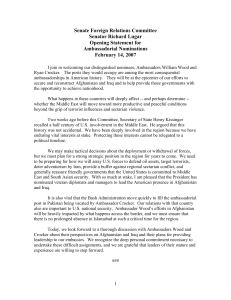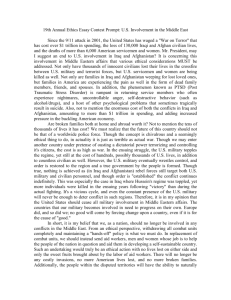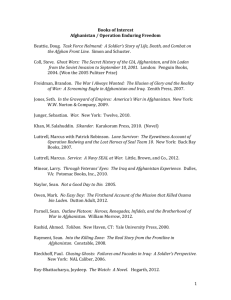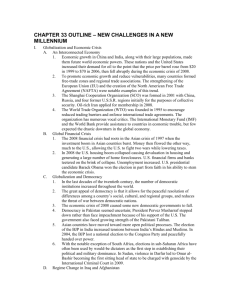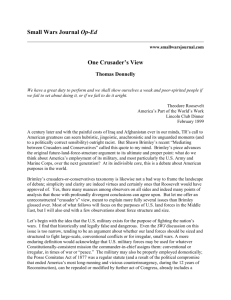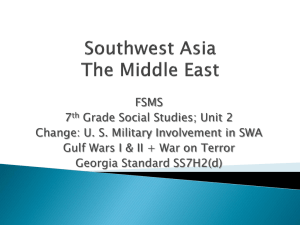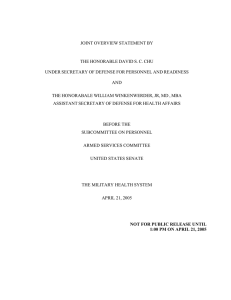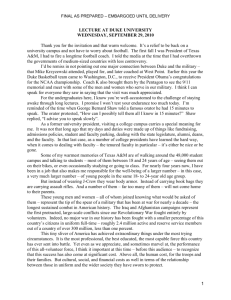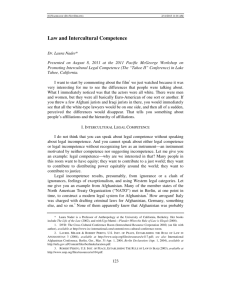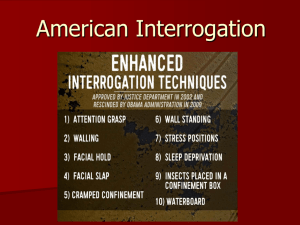Appendix 1: Assessment of Military Cultural Competence Part 1
advertisement
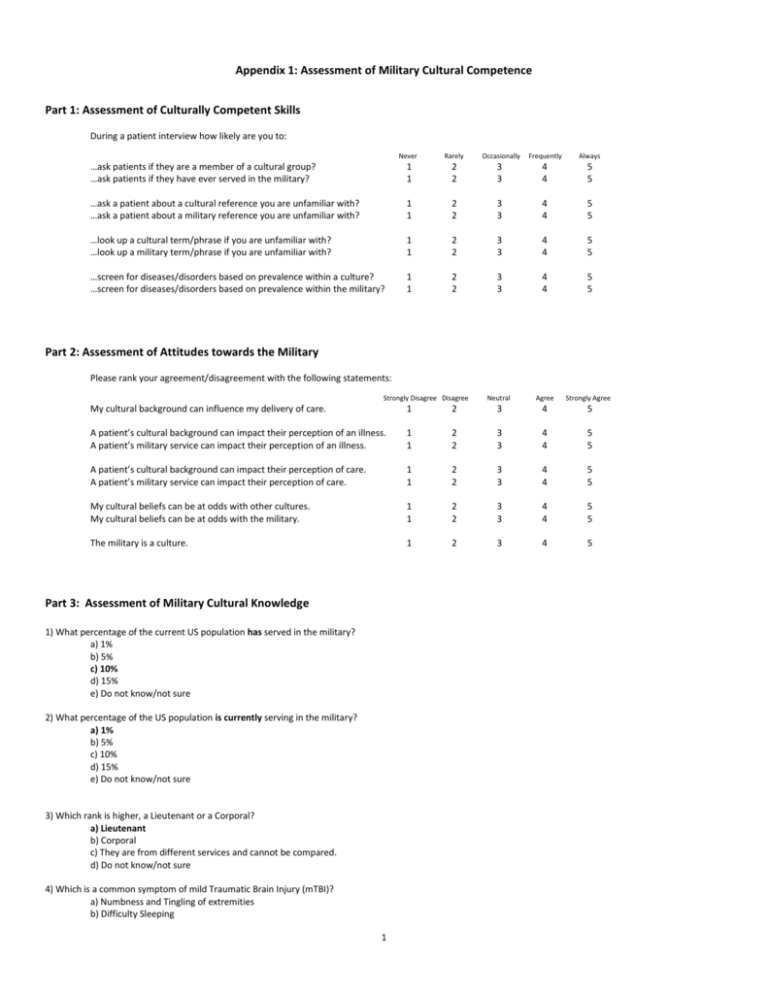
Appendix 1: Assessment of Military Cultural Competence Part 1: Assessment of Culturally Competent Skills During a patient interview how likely are you to: Never Rarely Occasionally Frequently Always …ask patients if they are a member of a cultural group? …ask patients if they have ever served in the military? 1 1 2 2 3 3 4 4 5 5 …ask a patient about a cultural reference you are unfamiliar with? …ask a patient about a military reference you are unfamiliar with? 1 1 2 2 3 3 4 4 5 5 …look up a cultural term/phrase if you are unfamiliar with? …look up a military term/phrase if you are unfamiliar with? 1 1 2 2 3 3 4 4 5 5 …screen for diseases/disorders based on prevalence within a culture? …screen for diseases/disorders based on prevalence within the military? 1 1 2 2 3 3 4 4 5 5 Part 2: Assessment of Attitudes towards the Military Please rank your agreement/disagreement with the following statements: Neutral Agree Strongly Agree My cultural background can influence my delivery of care. Strongly Disagree Disagree 1 2 3 4 5 A patient’s cultural background can impact their perception of an illness. A patient’s military service can impact their perception of an illness. 1 1 2 2 3 3 4 4 5 5 A patient’s cultural background can impact their perception of care. A patient’s military service can impact their perception of care. 1 1 2 2 3 3 4 4 5 5 My cultural beliefs can be at odds with other cultures. My cultural beliefs can be at odds with the military. 1 1 2 2 3 3 4 4 5 5 The military is a culture. 1 2 3 4 5 Part 3: Assessment of Military Cultural Knowledge 1) What percentage of the current US population has served in the military? a) 1% b) 5% c) 10% d) 15% e) Do not know/not sure 2) What percentage of the US population is currently serving in the military? a) 1% b) 5% c) 10% d) 15% e) Do not know/not sure 3) Which rank is higher, a Lieutenant or a Corporal? a) Lieutenant b) Corporal c) They are from different services and cannot be compared. d) Do not know/not sure 4) Which is a common symptom of mild Traumatic Brain Injury (mTBI)? a) Numbness and Tingling of extremities b) Difficulty Sleeping 1 c) Mood Changes d) All of the above e) Do not know/not sure 5) What percentage of new military recruits are women? a) 1% b) 5% c) 20% d) 40% e) Do not know/not sure 6) What percentage of women report experiencing sexual trauma while in the US military? a) 1% b) 20% c) 50% d) 90% e) Do not know/not sure 7) About how many US service members have developed Posttraumatic Stress Disorder (PTSD) due their combat exposure in recent conflicts (Iraq/Afghanistan)? a) < 5% b) 10%-18% c) 40%-65% d) 87%-95% e) Do not know/not sure 8) True of False: A commander can ask any physician if a service member is medically/psychologically capable of doing their job without consent of the service member. a) True b) False c) Do not know/not sure 9) What is the primary mechanism of injury sustained by US forces in Afghanistan? a) Gunshot wound b) Blast injury c) Stab wound d) Helicopter crash e) Do not know/not sure 10) Which of the following is the most common injury sustained from the wars in Iraq and Afghanistan? a) TBI b) Limb amputation c) Orchectomy d) Hemothorax e) Do not know/not sure 11) What percentage of veterans receive their care from Veteran’s Affairs (VA) hospitals? a) 25% b) 33% c) 50% d) 75% e) Do not know/not sure 12) The US National Guard has 460,000 members. How many guard members have deployed to Iraq or Afghanistan between 2001 and 2008? a) None, they defend the US b) 2,500 c) 25,000 d) Over 250,000 e) Do not know/not sure 13) What percentage of active-duty military members have children? a) 8% b) 22% c) 43% d) 65% e) Do not know/not sure 14) As of 2006, the suicide rate of US soldiers returning from combat is __________ as compared to the age/gender adjusted US average: a) Half as high b) The same c) Twice as high d) Three times as high 2 e) Do not know/not sure 15) The number of people in the US who have deployed more than once is: a) 900 b) 9,000 c) 90,000 d) 900,000 e) Do not know/not sure 16) 12% of US military members screen positive for a mental health problem after one deployment. What percentage screen positive for any mental health problem after their third deployment? a) 18% b) 27% c) 36% d) 45% e) Do not know/not sure 17) Children of a deployed parent have increased rates of behavioral problems. a) True b) False c) Do not know/not sure 18) The average active-duty US military family moves: a) Every 2 years b) Every 3-4 years c) Every 5 years d) Rarely (>6 years), as it now optional e) Do not know/not sure 19) Military children are more likely to grow up around violence in the home. a) True b) False c) Do not know/not sure 20) 29% of the US population has a bachelor’s degree; what percent of military officers have a bachelor’s degree? a) 82% b) 64% c) 48% d) 13% e) Do not know/not sure 3
